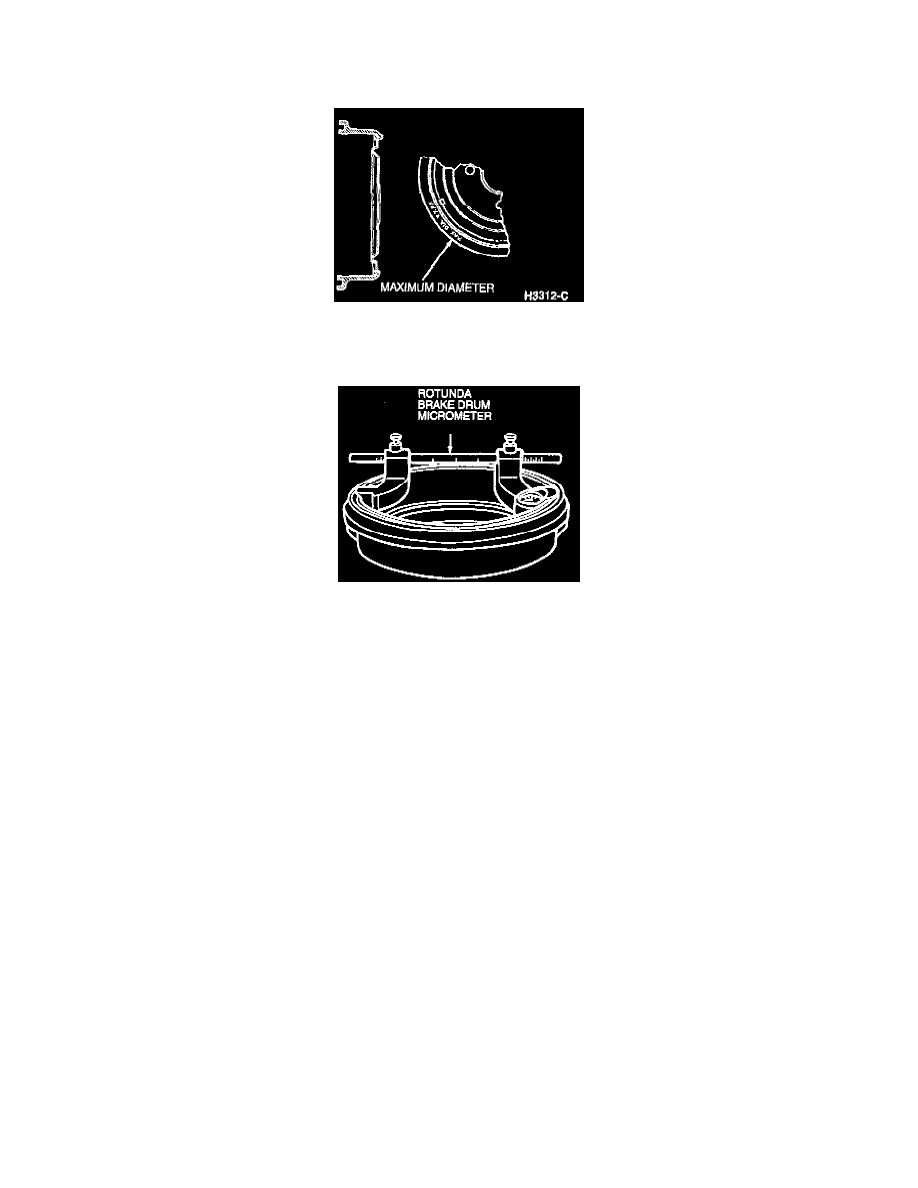Sable V6-183 3.0L DOHC VIN S MFI (1997)

Brake Drum: Testing and Inspection
-
Remove Drum.
-
Remove grease, brake fluid or other contaminants from the brake drum using denatured alcohol before making any inspection or measurement.
Maximum Diameter Location
NOTE: The maximum inside braking surface diameter is shown on each brake drum.
-
Check drum diameter using Rotunda Brake Drum Micrometer 104-00046 or equivalent to determine if brake drum braking surface diameter is
within specification.
NOTE: Best shop practice requires measuring every brake drum with a brake drum micrometer regardless of visual inspection. The brake drum
micrometer is set to the drum diameter and measures the amount and type of wear. Measure the diameter at various points of 45 degrees
around the circumference and at the bottom of the deepest groove to determine if the brake drum requires replacement.
-
If the maximum inside braking surface diameter shown on the brake drum is exceeded either by wear or refinishing, the brake drum must be
replaced. For refinishing, refer to Brake Drum/Service & Repair. See: Service and Repair/Refinishing
-
Check drums for heat-spotting. This indicates an overheating condition and they should be replaced.
